

|
Giza and Beyond
|
||||||||||||||||||||||||||||||||
 |
||||||||||||||||||||||||||||||||
| Arriving at Giza we were thrilled to find that the hotel we had selected online in Bangkok was all that it was billed. View for everyone, Excellent pool for the boys and located just a few doors down from a local restaurant that serves excellent middle eastern food. Here we hope to be able to relax and try to enjoy and understand this culture. The photo shows the view that we had from pool side. | ||||||||||||||||||||||||||||||||
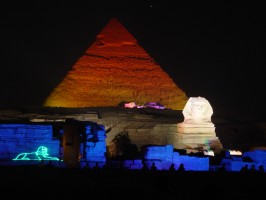 |
||||||||||||||||||||||||||||||||
| Today we simply stayed by the pool and tried to recover from significant jet lag and sleep deprivation. The one excursion that we made was to the sound and light show at the base of the sphinx with the pyramids as the background. Ok, this is a canned and commercial show that is a bit cheesy, but it does provide a good bit of background and history on these timeless monuments. The visual images are what really make this show worth attending, the colorful lighting and laser-generated hieroglyphics are visually alluring and Quinn captured a nice representation of this on the left. | ||||||||||||||||||||||||||||||||
| Today it was up early in the morning and off to visit the pyramids. We had the good fortune to have as a driver for the day a man who lives in Giza and who is a student of these structures and their history. Mohammed took us to the spots less visited for some great views. But what made this special is that he took us to a couple of tombs that are not on the tours and that were open to him because of his friendship with their guardians. We were let into the tomb of the man who built Khufu's pyramid. It was there that we saw up close rock carvings and paintings that were thousands of years old. The level of care and artistry that went into this work was stunning. It brought about a feeling of timelessness to stand in this room and imagine the individuals who had once practiced their craft here. | ||||||||||||||||||||||||||||||||
 |
||||||||||||||||||||||||||||||||
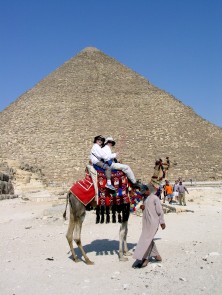 |
||||||||||||||||||||||||||||||||
| If you have children and you visit the pyramids at Giza, eventually you will find them perched atop a camel. Low and behold this very event did occur to us. Quinn and Griffin were both able to sit and take a short ride atop a local Bactrian. Both enjoyed the ride and Griffin comments about this experience on his reflection page. | ||||||||||||||||||||||||||||||||
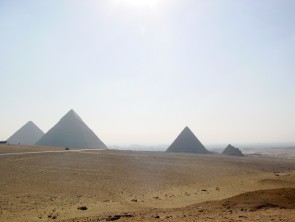 |
||||||||||||||||||||||||||||||||
| The high point for all of us on this day was the visit inside the largest pyramid on the site, the pyramid of Khufu (Cheops). Low on one side is a sloping doorway that had remained covered and secret for centuries and had avoided the prying eyes of all who sought entrance (Well all except a few early treasure thieves who had plundered the tomb millenias earlier). As we entered the structure we proceeded gently downward until we come to a passage way heading steeply up to the right. This is about 1.3 meters high and required a stooped steep climb. Next came the high gallery that leads to the final few low thresholds that mark the entry into the king's burial chamber. This spacious chamber high inside the heart of the pyramid is composed of 6 rectangular flat surfaces, smooth as can be imagined. The joints of these giant rock slabs are simply impossibly tight. When you have a room with opposable and silky smooth rock surfaces what do you get? Echo and sustain. Given the material and the size of the resonating object it is no wonder that the acoustics of this room are spectacular. Griffin found a spot in the floor that obviously had a space underneath it because it let out a big booming low frequency thump when he jumped on it. The sound reverberated throughout the pyramid in great stomach massaging waves. After much sonic limits testing, Quinn and Mark managed to linger in the room sitting silently and taking in its cosmic significance. With a bit of Baksheesh for the antiquities official, Mark was able to secure 10 minutes for Quinn to be alone in the room with only the sarcophagus as a companion. This is a powerful structure that provides a cosmic glimpse into the intersection of time, energy and space. To see all of our photos of the pyramids, see the photo page.. |
||||||||||||||||||||||||||||||||
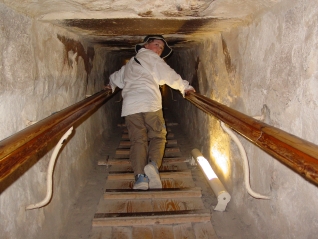 |
||||||||||||||||||||||||||||||||
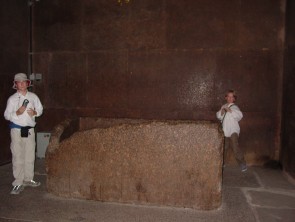 |
||||||||||||||||||||||||||||||||
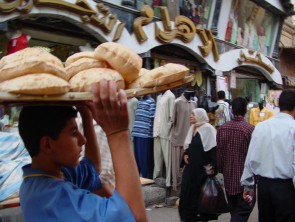 |
||||||||||||||||||||||||||||||||
| After a morning recovering at the pool, this evening we ventured out to the khan e Khalili Bazaar. This is the oldest bazaar in Egypt, dating back hundreds of years. It was filled at every turn with brass, fabric, spices, and souvenirs. What a wonderful place this must have been at one time. While we have become very familiar with being asked to buy things and to come into every store or stall, today this felt different. We heard such lines as "I am not sure what you want, but I have what you need", and "100% off everything in my store". For the first time we are in a country where there are times when we feel scorned and tolerated only for the money we spend. When we don't spend we are just an annoyance, when we do spend, it appears not to be enough. While we recognize that this is a society that seems to live off of Baksheesh, there is a level of animosity that all too often appears to be just below the surface. It is unfortunate and probably the result of the visit of too many rich western tourists looking to wield their capitol as a weapon of status and power. See more photos of the Bazaar. | ||||||||||||||||||||||||||||||||
 |
||||||||||||||||||||||||||||||||
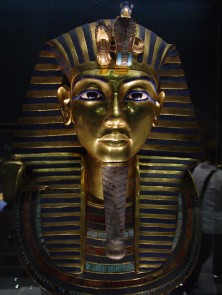 |
||||||||||||||||||||||||||||||||
| After a solid night's sleep the plan was to visit the Egyptian Museum and their world class collection of ancient artifacts. We have been to dozens of museums in most of the countries that we have visited, and yet this one was in many mays the most unique. It was the most poorly lit and cavalierly labeled museum that any of us have ever seen or could imagine. It was also utterly amazing for what it contains. The King Tutankamen materials need no introduction, but there was also other stunning jewelry, mummies, statues, and sarcophagus. Any one of these pieces could be the centerpiece of many world class museums around the world, the fact that there are hundreds of these pieces here makes it almost overwhelming. See our collection of photos from the Egyptian Museum. | ||||||||||||||||||||||||||||||||
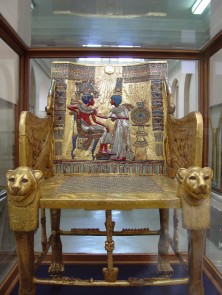 |
||||||||||||||||||||||||||||||||
 |
||||||||||||||||||||||||||||||||
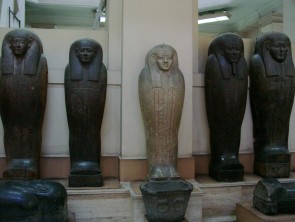 |
||||||||||||||||||||||||||||||||
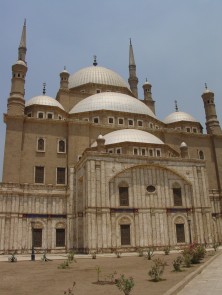 |
||||||||||||||||||||||||||||||||
| Our last full day in Cairo and we decided to spend it at the Citadel, a large walled structure in Central Cairo that was started by Salah ad-Din (Saladin) in the 12th century. The Citadel contains 3 mosques a palace and a number of museums. It was the Mosques that primarily interested us. The largest of the mosques was built by Mohammed Ali in the 19th century and is interesting on the outside if not a bit unimpressive on the inside. The medium sized mosque, that of An-Nasir Mohammed, was stripped by the Ottomans in the 16th century and therefore remains a bit sparse. The smallest Mosque of Suleyman Pasha was just right. Tastefully constructed with beautiful Artwork still in place it was the most impressive of the three. It has been fascinating being in these structures and the spiritual feeling that they cultivate is similar to the Buddhist and Hindu temples that we have visited in other countries. See more photos of the Citadel. | ||||||||||||||||||||||||||||||||
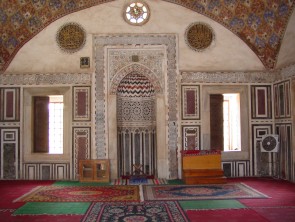 |
||||||||||||||||||||||||||||||||
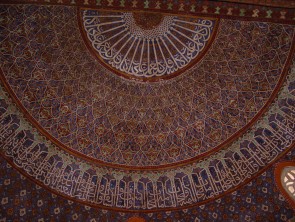 |
||||||||||||||||||||||||||||||||
Copyright © 2003 Bailey Educational Adventures
Direct comments or questions to baileym@pacificu.edu
Page last updated on